An outline of Tomi City
Location
Located in Eastern Nagano Prefecture, Tomi City is almost the center of Japan. At 190 km from Tokyo (1 hours 40 minutes by bullet train) and 50 km from host of the 1998 Winter Olympic Games, Nagano city, Tomi City is in an exceptionally convenient location. The City Hall is 533 meters above sea level, and the area of Tomi City is 112.3 square kilometers. The population is approximately 29,000 people. Other nearby municipalities include Ueda City, Komoro City, Saku City and Karuizawa Town in Nagano Prefecture, and Tsumagoi village in Gunma.
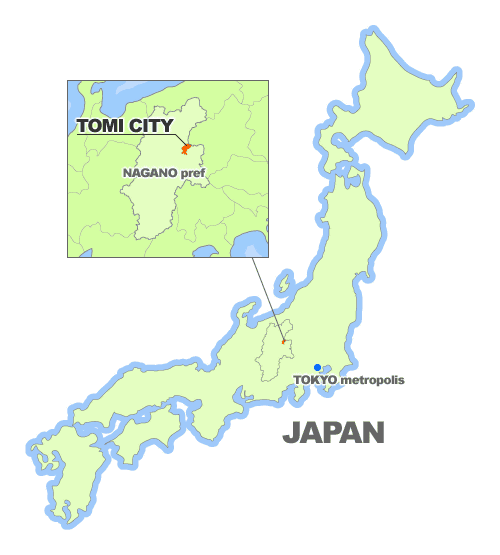
TouristAttractions of Tomi City
Unno Juku (Reservation Area for Important Traditional Buildings)
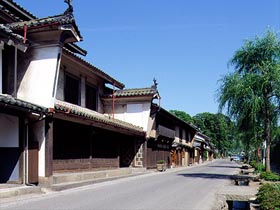
Unno Juku began as a post station on the old Hokkoku Highway in 1625 during the Edo era (1600-1867). It was an important rest spot for travelers, pilgrims to Zenkoji Temple, those transporting commodities, and the processions of feudal lords.
When post stations declined after the Meiji era (1868-1911), people of Unno Juku transitioned to silkworm culture and silkworm egg production using large rooms. As the soil in the area was sandy, it proved ideal for raising silkworms. Silkworm cocoons from Unno Juku were shipped all over Japan as well as overseas, and the residents of Unno Juku continued to prosper. Thus, Unno Juku transformed from a post station town to a sericultural town.
The stores and houses on Unno Juku Street are a mixture of Edo-era inns and shops, and silkworm rearing houses from the Meiji era. There are many distinctive buildings, one of which is Degeta zukuri - an inn whose second floor projects out over the first.
There are also several rare architectural features among the houses and shops of Unno Juku. Most of the houses feature Meiji-era ornamental walls, originally built to prevent fires, called udatsu walls. The lattice work, originating in the Meiji or late Edo era, is known as unno goshi. Traditional chimneys, or kinuki, can be seen in many of the ceilings. Fires were stoked to warm the silkworms, while the kinuki allowed the smoke to escape.
The Unno Juku Friendship Festival is held annually on November 23rd (Japanese Labor Day). This festival is marked by a parade with traditional costumes along the historic street.A
The House of Sumo Wrestler "Raiden"
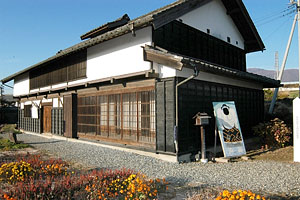
Perhaps Tomi City’s most notable resident was Raiden, one of Japan’s all-time great sumo wrestlers. Raiden was born in 1767 and began wrestling at the age of 23. He had immediate success and was soon promoted to Ozeki (the second highest level of Sumo) status. Over the course of his sixteen-year career, he won more than 96% of his bouts, a record that has never been matched.
According to popular histories, Raiden stood 6 feet 8 inches tall and weighed over 350 pounds. One apocryphal story says he could lift an iron bathtub with his mother still sitting inside it and that he pushed over a huge rock that blocked his passage with just one hand.
Clearly, few Japanese people have ever approached his abnormal size and strength. Raiden was a filial son who loved his parents very much, and as such spent a lot of money rebuilding their house in Tomi City, which was originally located west of the present site. The house was restored to its original state at this location in 1984.
The restored house was built after the model of his mentor’s residence. On the first floor, there is an indoor dohyo (sumo ring) where he could train even when the weather was bad. On the second floor, there is a balcony designed for watching sumo. Local sumo fans used to assemble there to watch Raiden practice.
Near the entrance there is a big stone that weighs over 200 pounds. Accounts of Raiden say that at an early age, he hung this stone from the end of his plow and trained himself by lifting it up.
Kabuki Stage
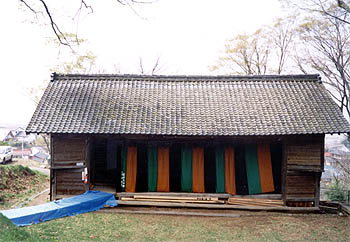
For many centuries, the Kabuki stage in Tomi City has been a center of amusement for the local people. According to an old document, Tomi City’s outdoor Kabuki theater was constructed in 1817. Kabuki, a form of traditional Japanese theater that became popular during the Edo period, has likely been performed on this stage since that time.
The stage in Higashimachi has a revolving portion with a diameter of 18 feet. The spectator’s seating is stadium style, forming a stair-like structure around the stage, and together are a priceless record of Kabuki’s history, especially in agricultural regions.
The stage is managed by the historical preservation society, which continues to host Kabuki performances to the present day. Elementary school children living in this area also play an important role in preserving the stage’s history. Local children perform folk tales and legends that have been handed down from generation to generation by residents.
* Kabuki was a quintessential Edo era entertainment, and was initially a popular pastime for the lower classes. However, over time it became a rarified spectacle primarily for upper class people, and can now only be watched at a few traditional theater houses in the country.
Yunomaru Heights
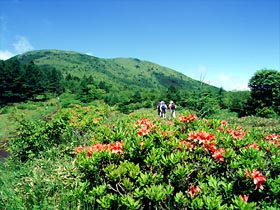
The Yunomaru highland area is a treasure trove of alpine plants. From mid-June to early July, 600,000 stalks of Japanese azalea are in bloom, along with many other rare alpine plants normally only visible at elevations of over 3000 meters.
The best trek for viewing rare alpine plants and flowers is the roughly 2.5 mile course from Jizo Mountain Pass to the Ikenotaira Wetlands. You can see countless numbers of flowers on this route from July to August. Within this highland wetland area there are more than 1,000 different kinds of plants, including iris and horse grass clumps. Yunomaru Heights are also a habitat for many rare birds. If you are lucky, you can even see golden eagles.
Yunomaru Heights also offers excellent mountaineering, hiking, and camping during the summer and Fall seasons, starting in June and ending in October. The area is famed for its gorgeous Fall Colors and old-growth national forests. On clear days, hikers can even see Mt. Fuji from the highpoints at Mt. Yunomaru and Mt. Higashi-Kagonoto. The area also offers broad views of the Northern Japanese Alps, and surrounding mountains.
Both peaks are convenient-to-access, half-day hikes with minimal elevation change, and which do not require special equipment or mountain climbing experience.
From December to March, Yunomaru opens for the Winter season. The Yunomaru ski area offers the nearest powder snow from Tokyo, and is a prime destination for winter sports, as well as snowshoeing. Throughout the winter season, the Yunomaru Ski Area is bustling with skiers and snowboarders who are seeking good powder snow and broad ski runs. All courses are also open to snowboarders.
Specialities of Tomi
Tomi is famous for walnuts, potatoes and Kyoho grapes.
Walnuts
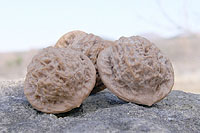
Tomi City has a moderate climate, with cool winters and warm summers, and a low rate of precipitation. The area is also one of the sunniest parts of Japan. Therefore Tomi has become a source of walnuts (especially the heirloom Shinano cultivar) due to this ideal climate.
The area’s farmers select and cultivate quality breeds of walnuts based on the size and thickness of the husks. Tomi City looks to continue to expand as a major producer of high quality walnuts and to further improve its reputation.
Hakudo Bareisyo (Potatoes)
Mimakigahara plateau is located in the south of Tomi City and to the west of it is the Yaehara plateau. The two plateaus rise to 780 meters above sea level. The potatoes harvested in these areas are called "Hakudo Bareisyo" for the whiteness of their skin. The high clay-content of the soil, the region’s dry climate, and the substantial temperature variation between day and night all contribute to the delicious, sought after potatoes grown in this area.
The Hakudo Bareisyo is recognized is traded all over Japan as a superior quality potato brand.
Kyoho Grapes

The word "kyoho" is written with the kanji for "enormous mountain" and kyoho are characterized by their large size, distinctive color, and exceptional sweetness.
Kyoho grapes have long been a staple crop of the region, and their cultivation dates back to Pre-War Japan. Tomi has become a proud-source of first class kyoho in Japan by promoting and supporting research of cultivation techniques and creating a communal shipping system.
Currently, the quality and consistency of Tomi City raised kyoho are carefully managed and overseen by uniform standards.
更新日:2020年8月18日
![東御市(とうみし)[TOMI CITY OFFICE]](../../file/12340.gif)
